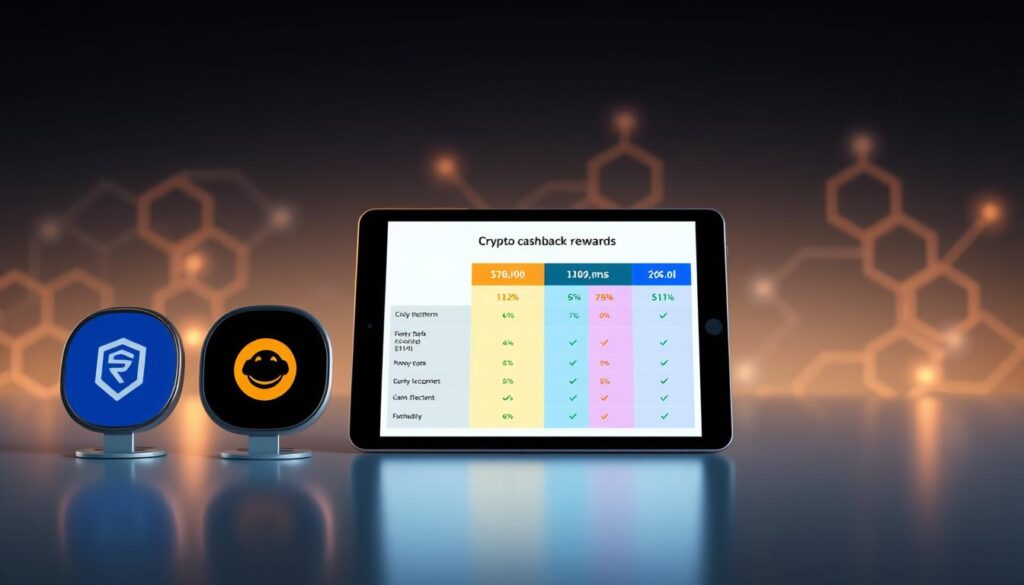Now Reading: Crypto KYC Requirements: Ensuring Compliance and Security
- 01
Crypto KYC Requirements: Ensuring Compliance and Security
Crypto KYC Requirements: Ensuring Compliance and Security
Digital asset platforms operate in a rapidly evolving financial landscape where security and regulation intersect. Since 2019, major U.S. agencies like the SEC and FinCEN have classified cryptocurrency trading platforms as money service businesses. This designation places them under the same compliance frameworks as traditional banks, including strict identity verification protocols.

Most centralized trading platforms now require users to submit personal documents before accessing full account features. While some platforms allow limited account creation without verification, activities like purchasing digital assets or withdrawing funds remain restricted. These measures align with anti-money laundering laws established under the Bank Secrecy Act, adapting decades-old financial safeguards to modern technology.
The shift toward standardized verification processes helps bridge the gap between innovative blockchain systems and conventional financial oversight. By implementing these protocols, exchanges address risks unique to digital currencies—such as instant transaction settlement and pseudonymous wallet addresses. This balance enables safer participation in global markets while maintaining user trust.
Key Takeaways
- U.S. regulators treat cryptocurrency platforms like traditional financial institutions under compliance laws
- Identity verification became mandatory for most trading activities after 2019 regulatory updates
- Accounts without completed checks face transaction limits and restricted access
- Compliance frameworks prevent illicit activities while supporting market growth
- Platforms continuously adapt verification processes to address emerging risks
Understanding the Role of Crypto KYC Requirements
Financial safety in digital markets starts with knowing who’s involved. Identity checks act as a critical shield against exploitation of blockchain systems. Between 2016 and 2020, fraud cases linked to digital assets surged by 24,000% in the U.S., exposing vulnerabilities in anonymous transactions.
Mitigating Fraud and Financial Crime
Blockchain’s pseudonymous nature creates loopholes for illegal fund movements. Criminals moved $14 billion through illicit transactions in 2021 alone. Modern verification systems cross-reference government IDs, biometric data, and transaction patterns to spot red flags.
Law enforcement agencies use these digital trails to trace stolen funds. For example, 2023 saw $2 billion lost to scams – a figure platforms aim to reduce through real-time monitoring. This layered approach disrupts attempts to disguise illegal activities as legitimate trades.
Building Trust in Digital Financial Services
Users increasingly demand proof of security before engaging with exchanges. Verified accounts create accountability, letting participants transact with confidence. Transparent processes also help businesses meet anti-money laundering standards set by global regulators.
Platforms implementing strict checks report higher customer retention rates. This trust-building measure converts skeptics into active users, fueling sustainable growth across the industry. It transforms digital asset platforms into reliable partners rather than speculative playgrounds.
The Evolution of KYC in the Cryptocurrency Landscape
Early digital currency platforms operated in a regulatory gray zone, setting the stage for major reforms. The 2013 shutdown of Liberty Reserve marked a turning point. This platform, which processed $6 billion in illegal funds over seven years, exposed how pseudonymous systems could enable large-scale crime. Global authorities responded by demanding stricter oversight for exchanges.

From Uncharted Territory to Standardized Systems
Before 2010, most trading platforms required only email addresses for account creation. The Liberty Reserve case proved this approach unsustainable. By 2015, 78% of major exchanges adopted basic document checks. Today, leading platforms use AI-powered tools to verify identities in seconds while scanning for suspicious patterns.
Shaping Modern Financial Guardrails
Three key developments transformed industry standards:
- 2017 FinCEN guidance classifying exchanges as money transmitters
- 2020 FATF “Travel Rule” mandating sender/receiver data sharing
- 2022 EU Markets in Crypto-Assets (MiCA) framework
These changes forced businesses to implement bank-grade compliance systems. Modern platforms now balance user privacy with regulatory demands through encrypted data storage and zero-knowledge proof technologies. This evolution supports safer transactions through secure payment gateways while maintaining market accessibility.
Key Components of Effective KYC Compliance
Modern financial platforms rely on layered security systems to balance accessibility with regulatory obligations. These systems combine advanced technology and human oversight to protect both users and institutions.

Identity Verification and Document Authentication
Initial checks require users to submit core personal details: full name, birth date, and physical address. Platforms then validate government-issued IDs through multiple methods:
- AI-powered document scanning for forgery detection
- Liveness checks comparing selfies to ID photos
- Database cross-referencing with national registries
This three-step validation process ensures documents belong to real individuals while blocking synthetic identities. Some services now use blockchain timestamps to create immutable audit trails.
Customer Due Diligence and Risk Profiling
Financial platforms apply risk-based measures recommended by global watchdogs. Low-risk accounts might need only basic checks, while high-risk profiles trigger enhanced scrutiny:
- Source of funds verification for large transactions
- Ongoing transaction pattern analysis
- Real-time sanctions and PEP database screening
Automated systems flag unusual activity like sudden large withdrawals or connections to blacklisted wallets. Human reviewers then investigate potential red flags. This hybrid approach helps digital asset services maintain compliance without sacrificing user experience, as seen in leading lending platforms.
Navigating Global Regulations and Industry Standards
Global financial systems face unique challenges as digital asset platforms operate across borders. Regulatory frameworks differ significantly between nations, creating a complex web of compliance obligations. The Financial Action Task Force (FATF) provides foundational guidelines adopted by 200+ countries to combat illicit activities.

Understanding AML, CFT, and FATF Recommendations
Anti-money laundering (AML) and counter-terrorism financing (CFT) rules form the backbone of international standards. FATF’s Travel Rule mandates that virtual asset service providers share transaction details exceeding $1,000. Key components include:
- Verification of sender/receiver identities
- Real-time data transmission between institutions
- Threshold adjustments based on local laws
Britain enforces these rules for all transactions regardless of amount. This contrasts with the EU’s €1,000 limit and Singapore’s flexible approach for digital payment token services.
Jurisdictional Variations in Crypto Compliance
Regional terminology reflects differing priorities. European operators become “crypto asset service providers,” while U.S. firms register as money services businesses. Three critical differences emerge:
- Data collection depth varies by risk assessment models
- Reporting timelines range from instant to 3-day windows
- Sanction screening methods adapt to regional watchlists
Multinational platforms must implement modular compliance systems that adjust to local requirements. This flexibility helps businesses maintain operations while meeting evolving international standards.
Comparing Manual and Automated KYC Processes
Financial platforms face growing pressure to verify identities quickly without compromising security. Two distinct approaches dominate this space: traditional human-led reviews and modern automated systems.
Balancing Speed and Accuracy
Manual checks require staff to examine documents like passports or utility bills. This time-consuming process often leads to 72-hour delays, causing 34% of applicants to abandon sign-ups. Human reviewers also struggle to spot sophisticated forgeries, creating gaps fraudsters exploit.
Automated solutions slash verification times to under a minute. Advanced algorithms cross-check IDs against global databases while detecting tampered files. These systems reduce errors by 89% compared to manual methods. Some platforms now skip document scans entirely, using biometric checks that confirm identities in 4.5 seconds.
While automation cuts costs by nearly half, it requires significant tech investment. Hybrid models combining instant scans with human oversight for flagged cases are gaining traction. This approach maintains compliance standards while keeping legitimate users moving through the onboarding funnel.
FAQ
How does identity verification prevent fraud on digital asset platforms?
Platforms like Coinbase and Binance use advanced checks to confirm user identities, reducing fake accounts and unauthorized transactions. This process aligns with anti-money laundering (AML) laws and deters illegal activities such as terrorist financing.
What role does customer due diligence play in risk management?
Firms assess user behavior, transaction patterns, and geographic risks to categorize clients. High-risk profiles trigger enhanced monitoring, ensuring compliance with frameworks like FATF recommendations and local regulations.
Are manual checks still relevant compared to automated systems?
While automated tools from providers like Chainalysis offer speed, manual reviews address complex cases. Hybrid models balance efficiency and accuracy, especially for flagged activities or politically exposed persons (PEPs).
How do regional laws impact global exchanges?
Jurisdictions like the EU (MiCA) and Singapore (MAS) enforce distinct rules. Platforms must adapt procedures for identity proofing, reporting thresholds, and data retention to operate legally across markets.
Can decentralized platforms achieve compliance without central oversight?
Projects like Uniswap integrate third-party solutions for wallet screening and activity monitoring. Partnering with regulated custodians or using blockchain analytics tools helps meet standards while preserving decentralization.
What measures build trust in digital financial services?
Transparent policies, audit trails, and real-time transaction alerts reassure users. Publicly sharing compliance certifications (e.g., ISO 27001) also strengthens credibility in a competitive industry.













outdoor furniture
There’s definately a lot to learn about this issue. I like all
of the points you have made.